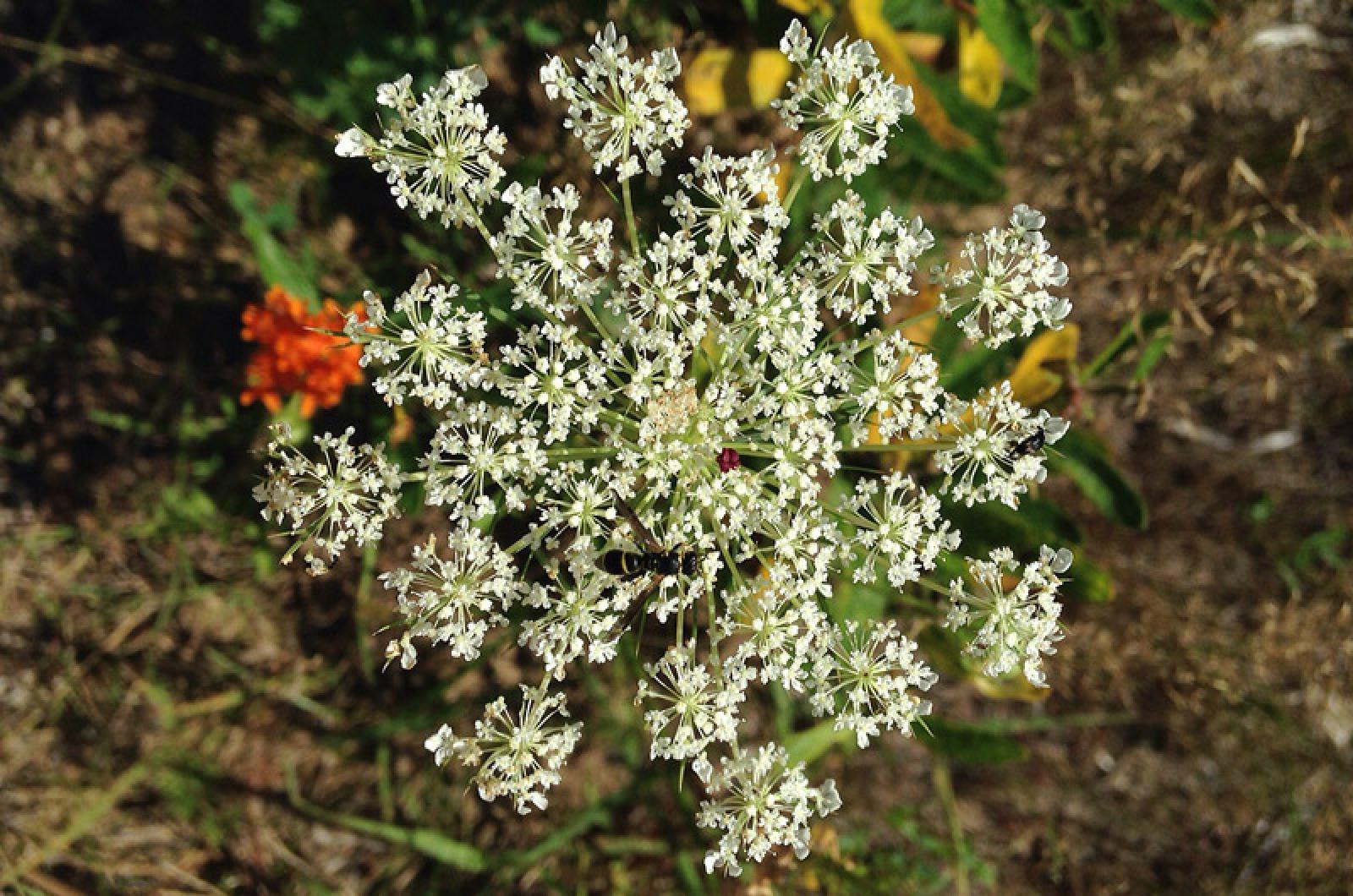Queen Anne’s lace is caught in a contradiction. This flower might be a wicked weed or a superb herb: it has both its fans and its detractors. Bob Dylan was on the side of wonderful, singing:
Purple clover, Queen Anne’s Lace, Crimson hair across your face, You could make me cry if you don’t know, Can’t remember what I was thinkin’ of, You might be spoilin’ me too much, love, Yer gonna make me lonesome when you go.
As was Edna St. Vincent Millay, who admired a field of this flower:
Her lawn looks like a meadow, And if she mows the place, She leaves the clover standing, And the Queen Anne’s Lace.
On the other side of the fence (or meadow as the case may be) are its critics. According to the United States Department of Agriculture (USDA), all 48 states in the contiguous United States consider it a weed. And, of those, 14 classify this plant as ‘invasive.’
Though it has been naturalized over the years, Queen Anne’s lace was an import. It originally hailed from Europe and was brought over by the colonists for its usefulness as both food and medicine.
It is difficult to not see the beauty of this flower. Its tiny delicate white flowers come together in a dense, flat umbel, sometimes with a red or purple dot at the center. Legend has it that this dot is the result of a finger prick from Queen Anne while she was tatting lace. The flower is so lace-like, the origin of the name is attributed both to the former queen, and alternately to the patron saint of lacemakers, also named Anne.
With its fern-like leaves that resemble parsley, it is not a stretch to believe that it is in the same family as that herb, and also dill, chervil, fennel, aniseed, borage, coriander and caraway. All of those herbs share the same scientific family. And like those other plants, Queen Anne’s lace is edible.
In fact, more than just the leaves tempt the forager. Consider that this plant is also known as wild carrot, and is an ancestor to our modern (usually) orange root vegetable. Queen Anne’s lace is known not only for its taste, but also for its high sugar content, second in the root vegetable family for its sweetness only after beets. Beyond its root recipes, some foragers claim that the flowers are excellent ‘French’ fried, though I haven’t yet tried that method of munching them.
Dr. Francis Porcher, southern Civil War doctor and herbalist, enthused “the root is edible and possesses more aroma than any other indigenous plants.” He continues to espouse its medicinal values, explaining that it is “used in spasmodic vomiting, flatulent colics, and nervous headache.” No problems I hope to ever have!
However, the most intriguing medicinal use has been and continues to be its employment as a contraceptive. Eating parts of the plant is believed to inhibit a fertilized egg’s ability to implant itself in a woman’s uterus, so it has been used as a ‘morning after’ pill of sorts.
If you aren’t 100 per cent sure of your identification, don’t harvest or use this plant for anything. For those susceptible, it can cause photosensitivity and irritate the skin. Queen Anne’s lace is also quite similar in appearance to another plant, water hemlock, which is deadly, and was the weapon of choice in the demise of philosopher Socrates.
Notwithstanding its poisonous pal and this dangerous dichotomy, Queen Anne’s lace is an ornament to the fields where it grows, and a living illustration of the wisdom of philosopher Ralph Waldo Emerson, who asked and answered the question of what is a weed. Simply put, he stated, “A plant whose virtues have never been discovered.”
Suzan Bellincampi is director of the Felix Neck Wildlife Sanctuary in Edgartown, and author of Martha’s Vineyard: A Field Guide to Island Nature.




Comments (2)
Comments
Comment policy »